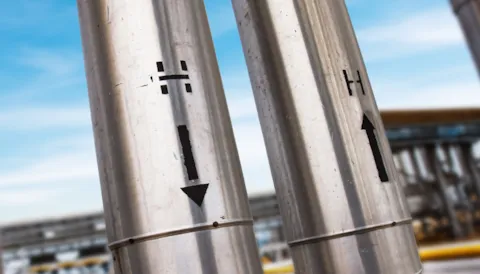 05 June, 2025
05 June, 2025 Vallourec’s Delphy vertical hydrogen storage solution receives technical qualification from DNV
Vallourec, a world leader in premium seamless tubular solutions, announces the official qualification of Delphy, its vertical gaseous hydrogen storage solution, by DNV. A world first, Delphy enables the storage of 1 to 100 tons of hydrogen under maximum safety conditions. Thanks to its minimal footprint, this vertical system - extending up to 100 meters underground - meets the challenge of complex and demanding industrial environments. It targets both green hydrogen producers and industrial players such as synthetic fuel producers (e-SAF, e-methanol), green ammonia producers, steelmakers, and refineries.